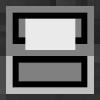So I've come to the crossroads between writing a script to draw objects on a screen or just using windows and drawing things in those instead.
By drawing objects on a screen I mean drawing things like buttons with text etc. I know you can do this with windows but would that decrease performance significantly if I used multiple windows for different buttons/menus etc.?
I want to create windows that have other programs running in them as well (like creating multiple instances of shells), so that'll be happening in the background separately from the other objects or 'object windows'.
With the windows API I could draw things in the window a bit easier (and also harder because I have to create functions to calculate the actual cursor position within the active window) and I could run multiple windows doing different things 'in parallel' as well.
What do you think? Pros and cons wise I reckon sticking with objects is better and having the other windows acting as program-runners, but what are your thoughts?






